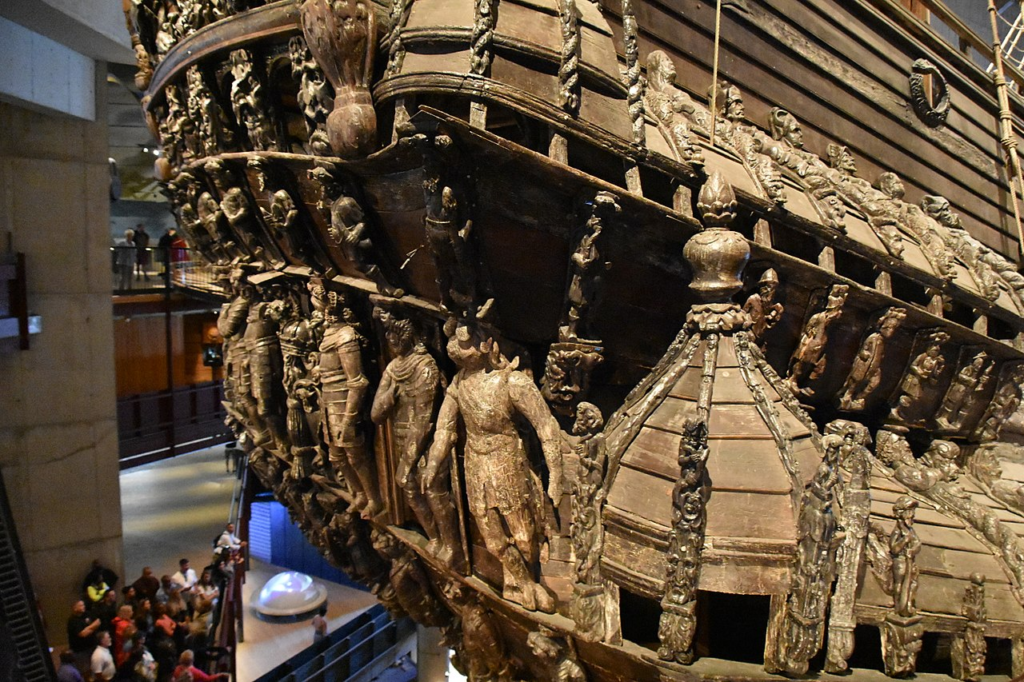Sweden’s Vasa warship, a symbol of maritime history, defied time and now stands as one of the best-preserved 17th-century ships in the world.
Key Points at a Glance
- The Vasa warship sank on its maiden voyage in 1628 after covering just 1.3 kilometers.
- Raised from the seabed in 1961 after 333 years, it was found in remarkably preserved condition.
- The ship is now housed at the Vasa Museum in Stockholm, one of the most visited maritime museums globally.
- Vasa is considered the best-preserved ship of its time, offering unparalleled insights into 17th-century shipbuilding and naval history.
- The discovery and conservation of Vasa represent a monumental achievement in marine archaeology and cultural heritage.
On August 10, 1628, the Vasa warship embarked on its highly anticipated maiden voyage from the port of Stockholm. Built to showcase Sweden’s naval supremacy under King Gustavus Adolphus, the ship was a marvel of engineering, adorned with intricate carvings and armed with an impressive array of 64 bronze cannons. However, this symbol of power met a tragic fate. Just 1.3 kilometers into its journey, Vasa capsized and sank due to its unstable design, claiming the lives of at least 30 crew members.

The disaster was a result of miscalculations in the ship’s design. The top-heavy structure, laden with cannons and ornate decorations, lacked sufficient ballast to stabilize it. Despite being a symbol of ambition, Vasa’s fate became a stark lesson in the importance of engineering precision.
For over three centuries, the Vasa lay forgotten at the bottom of Stockholm’s harbor. It wasn’t until 1956 that Anders Franzén, a Swedish marine technician, rediscovered the ship. His meticulous research and determination led to one of the most ambitious maritime salvage operations in history. In 1961, the Vasa was successfully raised from the seabed, revealing a remarkably preserved vessel thanks to the brackish waters of the Baltic Sea, which hindered the growth of wood-destroying organisms.
The ship’s resurrection captivated the world, drawing attention to the potential of underwater archaeology. Vasa’s near-intact condition provided a unique opportunity to study 17th-century shipbuilding techniques, daily life aboard naval vessels, and the artistic craftsmanship of the era.
Today, the Vasa is the centerpiece of the Vasa Museum in Stockholm, which opened in 1990. The museum offers a comprehensive narrative of the ship’s history, from its construction and tragic sinking to its rediscovery and meticulous preservation. Visitors can marvel at the ship’s intricate carvings, which depict biblical scenes, mythical creatures, and Swedish royalty, all designed to assert the nation’s power and prestige.
The museum also houses thousands of artifacts recovered from the wreck, including sailors’ personal belongings, tools, and weapons, painting a vivid picture of life aboard the ill-fated ship. Advanced preservation techniques continue to ensure that Vasa remains a testament to history for future generations.
The story of the Vasa extends beyond its historical significance. It highlights the intersection of science, technology, and society. The ship’s preservation required groundbreaking chemical treatments and engineering solutions, making it a case study in conservation science. Moreover, the Vasa serves as a cultural icon, attracting over a million visitors annually and contributing to Sweden’s national identity and tourism industry.

The lessons from Vasa’s construction and sinking resonate even today, emphasizing the importance of balancing ambition with practical engineering. Its resurrection reminds us of the power of human curiosity and innovation in uncovering and preserving the past.
As research on the Vasa continues, scientists and historians hope to uncover even more about the ship’s construction, its crew, and the socio-political climate of 17th-century Sweden. New technologies, such as 3D scanning and advanced materials analysis, promise to shed further light on this extraordinary relic.
The Vasa remains not just a symbol of Sweden’s maritime heritage but also a testament to human ingenuity and the enduring quest to connect with history. It stands as a beacon of cultural preservation, reminding us of the importance of learning from the past to shape a better future.